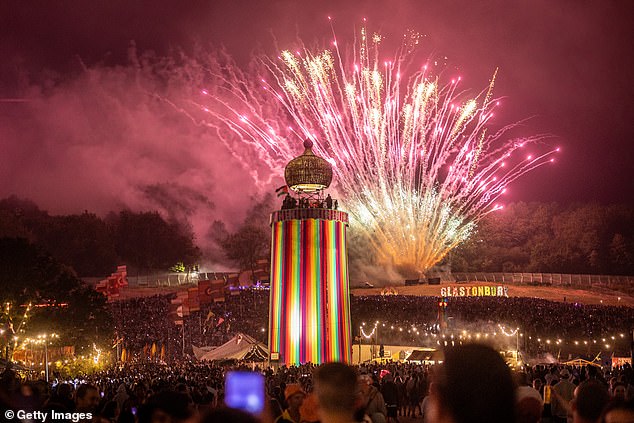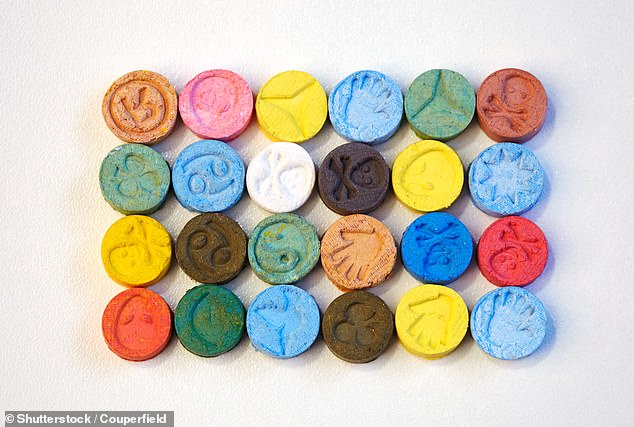Drug warning issued in Glastonbury as experts say ‘higher strength’ pills with ‘significant health risks’ back in circulation
Super-strength ecstasy pills containing potentially life-threatening levels of MDMA are back in circulation in Britain, experts warn as Glastonbury gets underway.
Tests carried out on the party drug this year showed that some pills contained up to 320mg of MDMA.
The Loop, a drug monitoring service licensed by the Home Office, found that the average pill strength had returned to pre-pandemic levels of 180mg. That is more than the 140 mg measured last year.
One in 10 drugs tested was found to have a strength of over 250mg. People have died from taking as little as 150mg of MDMA, although no amount is considered safe.
In preparation for Glastonbury, the non-profit organisation, which recently conducted drug testing at Manchester’s Parklife festival, warned that young people who have come of age during Covid-19 are “particularly at risk”.
Tests carried out on the party drug this year showed that some pills contained up to 320mg of MDMA. The Loop, a Home Office accredited drug monitoring service, found that the average pill strength of 180mg had returned to pre-pandemic levels – up from the 140mg recorded last year. Pictured is a sea of people watching Sir Elton John’s headline performance at Glastonbury in 2023

Ahead of Glastonbury, the non-profit organisation, which recently carried out drug checks at Parklife festival in Manchester, warned that young people coming of age during Covid are ‘particularly at risk’. Pictured: Fireworks explode above the site at the end of day one of Glastonbury Festival 2024 yesterday

One in ten drugs tested was found to have a strength of over 250mg. People have died from taking as little as 150mg of MDMA, although no amount is considered safe
Adam Waugh, training co-ordinator at The Loop, and Professor Fiona Measham, chair of criminology at the University of Liverpool, said users had become accustomed to lower strength pills and so could underestimate the new formulations.
This could pose “a significant risk to public health,” they wrote in an article for Drug sciencewhen people are “overwhelmed by pills containing two or even three times the regular adult dose.”
It is the first time since the pandemic that The Loop has found pills containing more than 300mg of MDMA.
They added: ‘This risk is greater for young people, many of whom will have reached adulthood and only started taking lower strength pills and ecstasy pills during this post-pandemic period.
‘This age group is also the age group most likely to experience serious harm as a result of ecstasy use.’
MDMA is a stimulant and psychedelic that rewires the connections in the brain, dampening the part that controls anxiety.
It has been an illegal substance since 1977, when the government declared it a Class A drug.
There is no amount of MDMA that is considered safe. The drug can interact with different users depending on their body weight, what they are doing at the time, whether they mix the drug with other drugs, and whether they take multiple pills in a short period of time.
Earlier this month, The Loop tested samples of green, purple and grey ecstasy pills at Parklife that had been seized by police or thrown into amnesty bins.
They found that the pills were comparable in strength to the pills that had caused hospitalizations or even deaths.
Of the more than 150 samples of ecstasy tested by The Loop in 2024, just 2 percent contained no MDMA – a significant drop from 2021, when nearly half had no traces of the drug.
“Risk reduction messages – such as taking only a quarter at a time, drinking water, taking it slow and avoiding polydrug use – are as important as ever,” they said.
Side effects of MDMA include severe agitation, increased body temperature, convulsions or seizures and even an irregular heartbeat.
The latest data from the Office for National Statistics shows there were 51 deaths from MDMA in England and Wales in 2022. Before the pandemic, the number of deaths from ecstasy was 78.
Drug testing at festivals is part of an approach known as ‘harm reduction’.

Drug testing at festivals is part of an approach known as harm reduction. Organisers and police will try to prevent drugs from entering, but most agree that it is almost impossible to prevent it in the first place. Pictured are people walking around on the first day of Glastonbury yesterday

Earlier this month, The Loop at Parklife tested samples of green, purple and grey ecstasy tablets that had been seized by police or placed in amnesty bins. They found that the tablets were similar in strength to those that had led to hospital admissions or even deaths. Pictured: Parklife earlier this month
The organizers and police will try to prevent drugs from entering, but most agree that it is almost impossible to prevent this in the first place.
The on-site testing is carried out ‘behind the scenes’ using seized drugs or substances left in the amnesty bins.
If testers discover something that is potentially dangerous – stronger than normal, contaminated, or sold as something it is not – they warn festival-goers.
According to a report by the UK Home Office, the use of Class A drugs is estimated to cost British taxpayers more than £15 billion a year, mainly due to drug-related crime.
Under the Misuse of Drugs Act 1971, drugs are classified into three different classes based on their danger to humans.
Class A is the most serious and includes substances such as cocaine and crack, ecstasy, MDMA and heroin, while codeine, ketamine and cannabis are considered Class B.
The so-called ‘date rape’ drug GHB, anabolic steroids, nitrous oxide and the stimulant khat belong to the Class C drugs.
Under current drug laws, possessors of Class A drugs face up to seven years in prison, an unlimited fine, or both.
Anyone caught supplying or producing these substances could face life imprisonment, an unlimited fine, or both.
